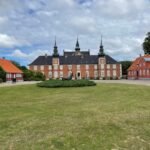
The Best Hiking Trails Near Copenhagen: Castle Hikes

This article is the ultimate guide for adventure seekers willing to explore the best hiking trails near Copenhagen!
While Copenhagen’s architectural marvels dazzle with their grandeur, a whole new side of Denmark can be discovered in its lesser-known castles and ruins scattered across the countryside. From the regal halls of Frederiksborg Castle to the ruins of Asserbo Charterhouse, each site carries a piece of Denmark’s historical heritage. Venturing on the hiking trails that lead to these captivating castles and ruins not only offers a journey through time but also provides a deeper connection to Denmark’s natural landscape. So, let go of the familiar and embrace the unknown, for beyond the city limits lies a realm of enchanting castles and ruins waiting to be explored.
Table of Contents
1.Eremitageslottet and Dyrehave
2. Næsseslottet and Furesø
3. Frederiksborg and Store Dyrehave
4.Kronborg and Teglestrup Hegn
5. Jægerspris and Nordskov
6.Aldershvile castle and Sophienholm manor, around Lyngy and Bagvsærd lakes
7.Asserbo Charterhouse and Tisvilde Hegn
8. Fredensborg castle and Gribskov
Hike through Dyrehaven and Discover Eremitageslottet

- Trail: Loop
- Starting point: Klampenborg Station, regular buses and trains available
- Ending point: Klampenborg Station, regular buses and trains available
- Length: 11 km
- Duration: 2.5 hours
- Difficulty: Easy
Our first recommendation for the best hiking trails near Copenhagen is visiting the Eremitageslotted, just a few kilomeneters from the city center.
Eremitageslottet, or the Hermitage Palace, is a hidden gem within the beautiful park forest of Dyrehaven (Deer Park), a UNESCO World Heritage Site in Denmark. Constructed in the 18th century during King Christian VI’s reign, this castle served as a royal hunting lodge, offering respite to Danish monarchs. It was originally designed for hosting solitary royal banquets with a unique mechanism to elevate tables from the basement to the dining room, though this feature was later removed. Over time, the lodge was renovated, playing significant roles in Danish history such as hosting the signing of the Danish constitution in 1849, and reopened in 2013 following extensive renovations.
Surrounding Eremitageslottet is the vast forest park of Dyrehaven, renowned for its majestic oak trees and diverse deer populations, including red, fallow, and Sika deer. Established in the 17th century as a royal hunting ground, the park expanded under Christian V to accommodate parforce hunting. Dyrehaven’s diverse landscape includes areas like Fortunens Indelukke and Ulvedalene, home to the historic Ulvedal theatre. Notable attractions include Dyrehavsbakken, the world’s oldest amusement park, Kirsten Piils Kilde, a spring with legendary curative waters, and Peter Lieps Hus, a historic restaurant. Dyrehaven offers nature lovers a rich blend of history and wildlife, making it a perfect destination to explore and admire the different deer species.
The hiking trail
Our hiking day in Dyrehave started from the Klampenborg train station, located on the park’s southern edge. Passing by the Peter Lieps Hus and Bakken, oldest amusement park in the world, we set the direction northward into the heart of the park, where there was bustling of both locals and tourists along the wide pathways. As we delved deeper into the park, our excitement was lifted at as we encountered the park’s famed deer, fellow and red deer were either crossing our path graciously or grazing between the trees. Amidst the vast valley of old oak trees, we made our way towards Eremitageslotten, where we saw a huge herd of deer grazing freely.
Despite the windy conditions in this open field in front of the Hermitage Palace, we continued on the wide pathways, passing by the local golf club fields. Spotting more deer on the way, we then crossed a tranquil river through a wooden bridge, immersed in the vibrant autumn hues of the forest. Though tempted to explore further, the October cold weather prompted us to retrace our steps, though the allure of the park’s northern reaches called on us. If you decide to venture further towards the northern part of the park, then you will be fascinated by a hidden spot, the Bøllemosen marsh. You can walk around the marsh along a wooden planked path and absorb the tranquillity of the area. On our return, we had more encounters with deer in the hilly Ulvedalene. The hike culminated in a warm cup of tea at home, the best ending to a day filled with exploration.
Hike Around Furesø lake and Discover Næsseslottet

- Trail: Loop
- Starting point: Farum Station
- Ending point: Farum Station
- Length: 23 km
- Duration: 5 hours
- Difficulty: Intermediate
Second in the list of the best hiking trails near Copenhagen comes the trail around Furesø, which includes the beautiful Næsseslottet.
Næsseslottet, an 18th century country estate situated on the eastern shore of Furesøen, north of Copenhagen, has a long history and picturesque surroundings. Originally known as Dronninggård, the estate was established in 1661 to manage the Crown’s agricultural lands. Acquired by Frédéric de Coninck in the late 18th century, the main building was reconstructed to Neoclassical style and the parkland was transformed into the first Danish Romantic Garden with exotic trees and monuments by famous sculptors. Over the years, Næsseslottet underwent various ownership changes and transformations, serving as a hotel, medical facility, and refugee centre before being converted into an office hotel in recent times. Despite the changes, Næsseslottet remains a beautiful Danish architectural heritage, and makes it a great destination for a hike or lake retreat around Furesø.
Furesø, Denmark’s deepest lake, has emerged as a top location for outdoor swimming, renowned for its Furesøbad bathing spot, but comprises also hilly hiking trails around the shore. Initially established as a public swimming area in the early 20th century, Furesøbad underwent significant renovations in 2001, offering swimming activities year-round. The lake hosts also various recreational activities, including swimming, snorkeling, sailing, and fishing. Three open-air baths, Frederiksdal Fribad, Furesøbad, and Kinabugten, offer sandy beaches and lifeguard, with bathing and snorkeling permitted throughout the lake. Additionally, there are many picnic areas available, which may be quite busy especially during the summer months.
The hiking trail
We started our hiking adventure by taking a train to Farum station, from where we found our way to the entrance of the park. We crossed Mølleåen (river), flowing between Farum Sø and Furesø. Opting to trek clockwise, we ventured southward from the station, where the landscape gradually transitioned from flat paths to rolling hills along the lakeshore. While the terrain occasionally rose to slightly higher altitude and breathtaking views over the lake and the trees leaning over the water, it then gently descended, bringing us closer to the lake. There were different small and wider pathways, ensuring that hikers like us were not on the way of mountain bikers and vice versa. As we walked further, there were plenty of picturesque spots for picnic and respite.
As we continued exploring, the landscape changed: dense forests and panoramic views on the southwest side. Amidst this serenity, we also spotted small snakes, which were very harmless and were not posing any threat unless, of course, maybe are provoked. We then passed by the small towns Virum and Holte and had a chance to get glimpse into the rich lifestyles of the locals, with their luxurious and beautiful houses and villas behind imposing gates and green hedges. Despite the beautiful houses and villas we passed, our focus remained steadfast on the lake and the forest.
Making a detour to Næsseslottet, between Virum and Holte, and venturing further, we found ourselves walking along a wooden bridge, skirting the tranquil waters of the lake. Along the way, on the north shores of the lake, we paused at a birdwatching station. There was a big field of yellow grass between the tall bird station and the lake, so the birds had space and privacy and were not disturbed by us. We watched the birds for a bit and then went back to the trail. Suddenly the picturesque park pathway transformed into the city roads, and soon we arrived at Farum station, closing our circular hike around Furesø.
Start
Farum Station
End
Farum Station
Duration
5 hours
Length
20.5 km
Difficulty
Easy
Frederiksborg Castle in Hillerød and Store Dyrehave

- Trail: Loop
- Starting point: Hillerød Station
- Ending point: Hillerød Station
- Length: 15 km
- Duration: 4 hours
- Difficulty: Easy
- Alternative hiking trail: Check out this trail Allerød
A visit to Frederiksborg Castle and hiking around Store Dyrehave is definitely one of the best hiking trails near Copenhagen.
Hillerød, located north from Copenhagen, is a captivating city brimming with history and charm. Its crown jewel is Frederiksborg Castle, a magnificent Renaissance palace that stands as one of the most impressive landmarks in Scandinavia. Constructed in the early 17th century by King Christian IV, the castle comprises beautiful gardens, interiors, and the captivating Museum of National History (Det Nationalhistoriske Museum), displaying centuries of Danish cultural heritage. We visited this beautiful castle and the museum ourselves, and we wandered through the beautiful halls adorned with artwork. We were also at an exhibition of the clothing of the royal family, and we would truly recommend visiting it. If you are in the area, then make sure to stroll through Frederiksborg Slotshave, the Baroque style garden surrounding the castle, with many pathways to choose to walk and a beautiful fountain and the lake surrounding it.
Frederiksborg Castle is truly magical and beautiful. It served as a royal residence for Danish monarchs for centuries, witnessing numerous historical events and royal ceremonies throughout its storied past. One of the most important events occurred in 1859 when the castle was ravaged by a devastating fire, resulting in extensive damage. However, through restoration efforts, Frederiksborg was rebuilt and reopened to the public. Additionally, the castle has played host to royal ceremonies-weddings and funerals of Danish monarchs and royal members, political gatherings, and cultural events throughout its past.
The hiking trail
Starting from Hillerød station, we embarked on a scenic hiking adventure towards Store Dyrehave. Just moments from the station, the urban bustle faded, replaced by the bird chirps and the rustle of leaves. We strolled past Store Dam and Bred Dam, two beautiful lakes enveloped by serenity, with trees bowing over their tranquil waters and their surface covered with water lilies. As we walked near the shore of the Bred Dam Lake, we also passed by Fantasiens Ø, the Fantasy Island. There was an enigmatic rock formation and a wall with three windows, stirring imaginations of royal romantic rendezvous of King Frederik VII and Countess Danner from centuries past.
Crossing a busy road car, we entered Store Dyrehave. As we ventured into the park, we encountered a tapestry of greenery, with towering oaks and pine. Amidst the vibrant foliage, a friendly fluffy-tailed squirrel greeted us. Surrounded by majestic pine and larch trees, interspersed with ferns and the occasional splash of green grass, we meandered through the park’s beautiful roads. There were also hidden mushrooms but also ant nests that dotted the forest ground.
Upon reaching the centre of the park where eight radial roads intersected, we were faced with a dilemma: which path to choose for our onward hiking adventure? A large ant nest right next to one of the roads served as a guiding beacon, leading us to opt for a southeastern route. Our decision was rewarded with the discovery of a hidden gem nestled among the trees—a tranquil lake concealed from the beaten path. Intrigued by the distant silhouette of a peculiar black bird, we ventured closer, only to be greeted by the rhythmic drumming of a pair of black woodpeckers. To our surprise, the area wasn’t as secluded as we initially thought; a well-appointed camping site with a wooden bench, table, and a campfire place provided a picturesque setting for our lunch break. After a short break serenaded by the woodpeckers, we resumed our hike, meandering westward along a quaint road that eventually led us back to the main road towards the heart of the park. Along the way, we marvelled at the abundance of woodpeckers and encountered more ant nests.
Opting for the charm of smaller roads once again, we embarked on a deeper exploration through the park’s hidden corners. This part of the park was also slightly hilly but posed no significant challenge. As we meandered along the path, we stumbled upon a breathtaking sight—a vibrant field of purple and pink foxglove flowers against a backdrop of lush green grass. The path itself took on a new character, its surface crisscrossed by the roots of pine trees adorned with pine cones and scattered stones, hinting at the trail’s dual purpose as a mountain biking route. Exiting the park’s embrace, we bid farewell to yet another friendly squirrel. Following the meandering paths through the Hillerød park, we passed by the enchanting Fantasy Island once more before arriving back at Hillerød station.
Start
Hillerød Station
End
Hillerød Station
Duration
4 hours
Length
15 km
Difficulty
Easy
Kronborg Castle in Helsingør: The Shakespearean Fortress
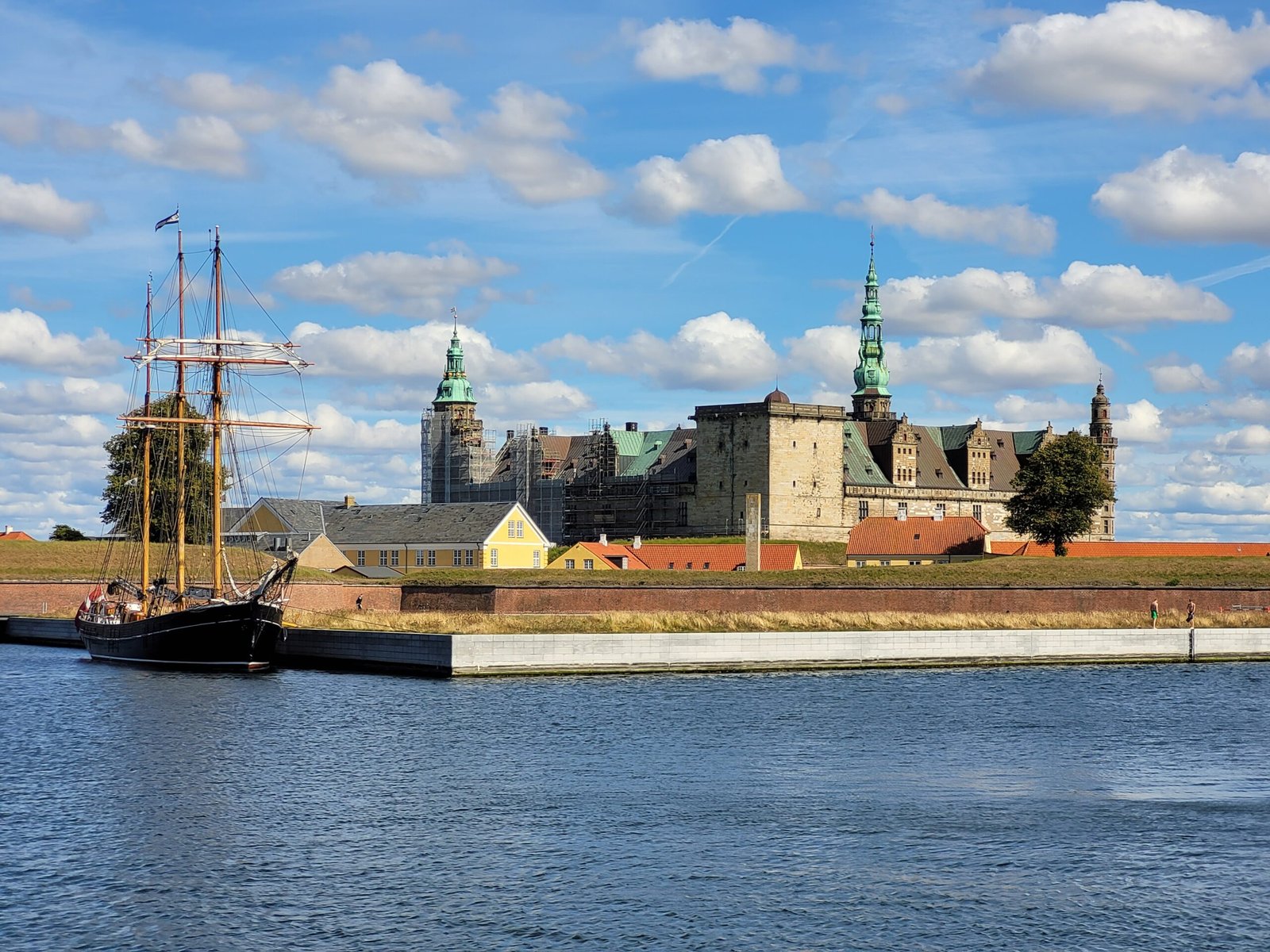
- Trail: Loop
- Starting point: Helsingør Station
- Ending point: Helsingør Station
- Length: 10-20 km, can be tailored
- Duration: 3-5 hours
- Difficulty: Easy
The list of best hiking trails near Coopenhagen continues with a must visit city Helsingør and its vast forest and stunning castle.
Kronborg Castle, famously associated with Shakespeare’s “Hamlet”, holds a significant place in Denmark’s history and cultural identity. Situated in Helsingør, the castle’s origins trace back to the 15th century when it was established as Krogen, a fortress, by King Eric of Pomerania. Renamed Kronborg, the castle underwent Renaissance renovations commissioned by King Frederick II, becoming a symbol of Danish power and control over the Øresund Sound. Today, Kronborg hosts annual summer concerts and theatres, presenting Shakespearean plays, which enchant visitors against the backdrop of its historic walls.
From its strategic location on Zealand’s (Sjælland) northeastern tip, Kronborg Castle played an important role for Danes, controlling trade routes and collecting tolls. Despite enduring fires and sieges, Kronborg remained resilient, serving as a royal residence, fortress, and prison throughout history. Following a devastating fire in 1629, King Christian IV supported its renovating, fortifying Kronborg’s defences and solidifying its status as one of Europe’s most impenetrable fortresses.
Holger the Dane, a legendary figure in Danish folklore, is said to rest beneath Kronborg Castle in Helsingør. According to the legend, Holger the Dane was taken to Avalon by the sorceress Morgan le Fay, who is also known as Morgana. In Avalon, Holger slept until the time when he would be needed to defend his homeland, Denmark. It’s said that his beard grew so long during the waiting time that it reached the ground during his slumber. A statue of the sleeping Holger can be found in the castle.
Following its military phase of over 130 years, Kronborg Castle underwent a transformation into a public attraction. In 1923, the Danish Army left the premises, and extensive renovations were undertaken to open Kronborg to the public in 1938. Today, Kronborg Castle is a UNESCO World Heritage Site, welcoming visitors to explore its majestic halls, captivating history, and cultural significance.
The hiking trail
Our hiking adventure began at the Helsingør train station, weaving through the historic streets. The Fairbairn’s crane and the Værftsmuseet near the train station hinted at the city’s shipbuilding legacy, but we were drowned closer to the Kronborg Castle. Although our gaze lingered on the castle for a moment, our destination was Teglestrup Hegn, promising a different kind of enchantment.
Skipping the castle visit, we strolled past Marienlyst hotel, located along the coastline. Marienlyst Spa Hotel, established in the late 19th century and was inspired by German spa towns and its proximity to Kronborg Castle. Since 1883, Marienlyst Hotel expanded under private ownership, and started attracting Danish royalty and international elite before cutting off its royal ties in 1896. Despite changing ownerships and enduring wartime challenges, the hotel has evolved into a symbol of Helsingør.
As we neared the hotel, we saw it was bustling with guests braving the icy sea waters for a refreshing dip before retreating to the warmth of its sauna, while others lounged by the outdoor pool basking in the weekend summer sun. Though we were tempted to linger longer at the coastline, the promise of exploring the Danish northern wilderness kept us on our path.
Venturing further into Helsingør suburbs, we found ourselves in the Kongenshave, a park with winding paths that led us near train rails connecting the main station in Helsingør with other northern cities and villages. Crossing a golf playground, we finally reached our lunch spot with a breathtaking view: the coastline, boats in the sea, and the distant silhouette of Helsingborg in Sweden across Øresund. Refreshed and refueled, we continued our hike surrounded by tall trees, inviting coastlines, and picturesque lakes where ducks and birds frolicked.
As we pressed forward, we embraced the serenity of the surroundings, taking photos of the towering trees that would probably soon adorn our home as printed canvases. After a couple of hours immersed in this beautiful forest, we decided to retrace our steps, heading back to Helsingør train station with memories of a day filled with history, natural beauty, and the unique charm of the Danish landscape.
Jægerspris Castle and some of Europe’s oldest trees

- Trail: Loop
- Starting point: Jægerspris Castle
- Ending point: Jægerspris Castle
- Length: 20 km
- Duration: 4.5 hours
- Difficulty: Easy
We have previously written about Jægerspris Castle and the visit to some of oldest trees in Europe, so it is no surprise that this is included in our list of best hiking trails near Copenhagen.
Jægerspris Castle, located on the Hornsherred peninsula west of Copenhagen, has a rich history dating back to the 13th century. Originally known as Abrahamstrup, it became Jægerspris in 1677 under the ownership of jægermester Vincents von Hahn. Later, it was acquired by Prince Charles of Denmark in 1703, who extensively expanded and renovated the castle, turning it into a hunting palace for the Oldenburgs (the German Oldenburg dynasty stayed in power in Denmark for 576 years until Queen Margrethe II stepped down in January, 2024).
Over the years, it served as a royal residence, a summer retreat, and eventually passed into the hands of King Frederik VII and his wife Countess Louise Danner in 1854. However, she was from a lower social rank, so she didn’t receive the same royal titles or privileges. They transformed the castle into a private retreat and later after the death of King Frederik VII, Louise opened part of it as a historic house museum, commemorating their lives together and serving as the foundation for charitable endeavours for poor women from the working class.
The park surrounding Jægerspris Castle, Mindelunden, is a sculpture garden designed by the Danish artist Johannes Wiedewelt and immortalizes Danish famous people and their legacies in stones. You will find an array of 54 memorial pillars of notable people, such as Absalon and Tycho Brahe. We wrote about Tycho Brahe observatory on the island on Ven on another occasion. Go check this out here!
In the park you can also pass by the Countess Danner’s grave, her resting place marked by a sarcophagus within a burial mound. Northward is the ancient ‘Jættestuen’, Denmark’s revered passage grave. Erected some 5200 years prior, it is a symbol of a bygone era when ‘Jötunn’, the mythical giants of Norse mythology, were believed to have sculpted these stone chambers. This truly adds a cool mythological angle to the whole castle experience.
The hiking trail
Our hiking adventure started already at the bus stop near the Jægerspris Castle. The castle, with its grandeur and the stunning deer statue in front of it, was a remarkable sight. However, our admiration was cut short by the wasp nests in the ground we stood on. To avoid any buzzing encounters, we quickly left the castle behind, resuming our hike towards Slotshegnet and Mindelunden. As we wandered through the castle’s forested grounds, we passed also by the Countess Danner’s grave, but the vibrant blooms of rhododendrons in this beautiful summer day captivated our senses, drawing us further into the heart of the park.
Our journey led us along the Dyrnæsevej street, where we passed by Granbohus, a sanctuary for children and young people with special needs, before venturing into the tranquil depths of Nordskov. The forest’s green canopy enveloped us as we followed the sun-dappled path, ultimately arriving at our first destination: Kongeegen, Europe’s oldest oak tree. It is truly a living piece of history, estimated to be between 1500 and 2000 years old, standing resilient against the passage of time.
Continuing our exploration, we passed by also Storkeegen with an estimated age of 800 to 1000 year and Snoegen at 600-700 years old, other ancient oaks steeped in myth and mystery, each bearing witness to centuries of forest life. As we meandered through vast fern fields and alongside glistening lakes, the tranquillity of the forest enveloped us, offering a sweet escape from the bustle of everyday life. Concluding our hike with a peaceful coffee break in Jægerspris town, we reflected on the beautiful hiking adventure we experienced, grateful for the opportunity to immerse ourselves in its timeless beauty.
Read more about the ancient trees and the hike here.
Start
Jægerspris Castle, Jægersrpis
End
Jægerspris Castle, Jægersrpis
Duration
4.5 hours
Length
20 km
Difficulty
Easy
Aldershvile Castle and Sophienholm manor in Bagsværd: Hike along serene Lakes
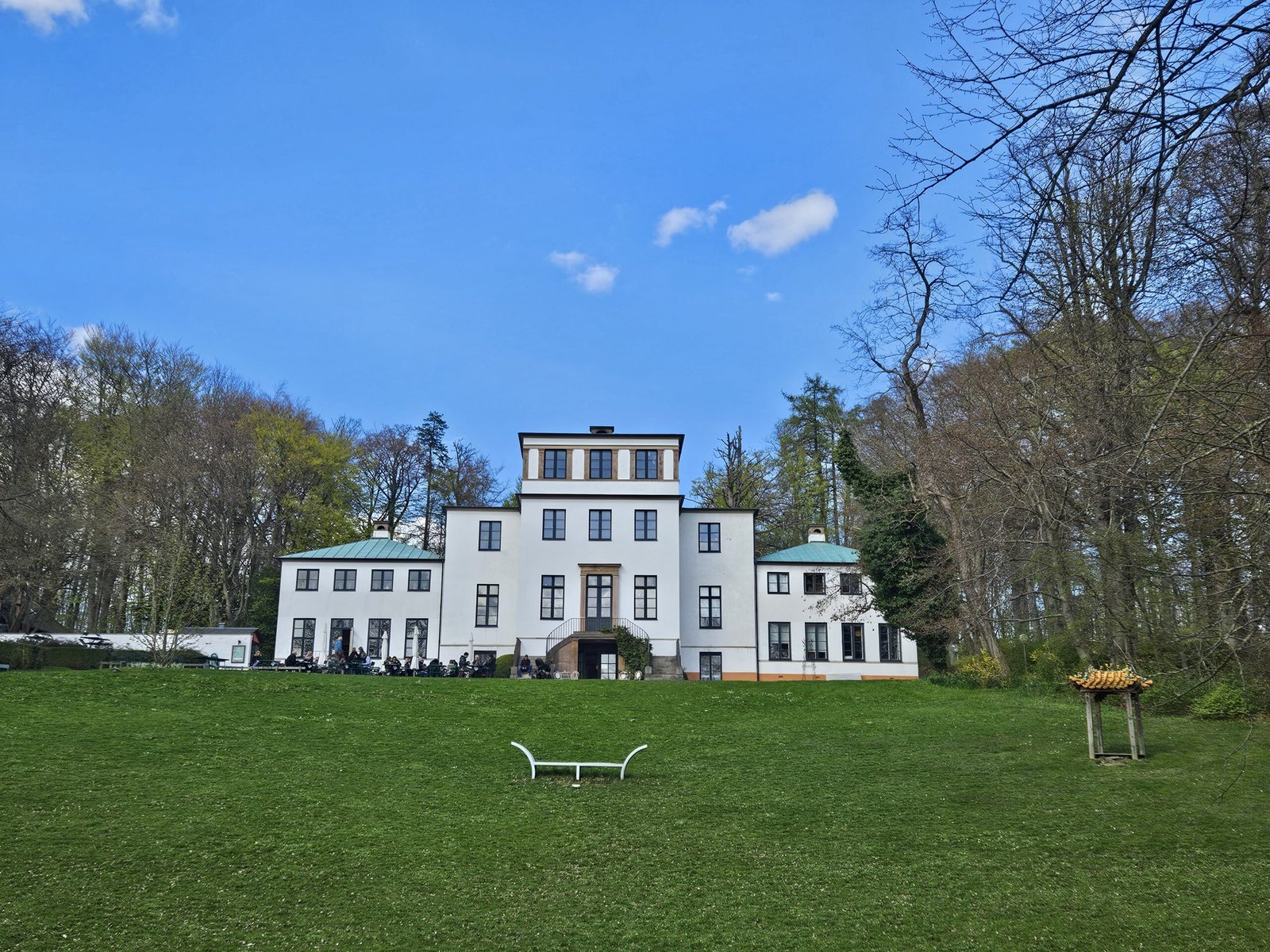
- Trail: Loop
- Starting point: Lyngby Station
- Ending point: Lyngby Station
- Length: 14.5 km
- Duration: 4 hours
- Difficulty: Easy
Although it comes further down in our list, the hike around Bagsværd and Lyngby lake is no less important in our list of best hiking trails near Copenhagen.
Aldershvile slotspark, located in Bagsværd, on the southern shores of Bagsværd Lake, has a history dating back to the 18th century with its picturesque gardens. However, today the park retains the remnants of the primary structure, which was destroyed by a fire in 1909. In 1987, Johan Theodor Holmskjold, director-in-chief of the Royal Danish Postal Services and the Royal Porcelain Factory, commissioned the construction of Aldershvile, a larger country house to replace Sophienholm.
Completed in 1790, Aldershvile represented a white building with a blue tiles, set amidst a huge English-style garden with a canal system. However, after Holmskjold’s death in 1793, it was revealed that he was in heavy debts and embezzlement charges, leading to the estate’s sale to Adolph Ribbing, a Swedish count exiled for involvement in the Swedish King Gustav III’s murder. In 1901, Angelica von Sponneck, later known as the Countess of Bagsværd, acquired Aldershvile, rising herself from poverty to marriage into wealth and subsequent tragedy. Sold in 1911 after a fire destroyed the house in 1909, Aldershvile came under Gladsaxe Municipality’s ownership in 1927.
Not less worthy of visit in the area is the Sophienholm manor, the house Holmskjold sold to build Aldershvile. Built in 1760s, Sophienholm originally served as a rural escape for him and his fiancée, Sophia Magdalena de Schrødersee, the manor named after her. He enjoyed ownership until 1790 when he the building was owned by a rich German merchant and then by a founder of a prominent publishing house, until the local Municipality acquired Sophienholm, transforming it into an exhibition and concerts venue.
Aldershvile Slotspavillon is another building to see near the picturesque Aldershvile. In the early 1920s, Carl Olesen, a grocer from Copenhagen, built the Aldershvile Palace Pavilion to enjoy the scenic views as his summer residence. After Olesen’s death, the municipality acquired the pavilion and park, opening the restaurant to the public in 1928. The restaurant is still active, but is also now known for scenes from a famous Danish TV series, Matador: TV series that every Dane would recommend to a foreigner to watch.
The hiking trail
Our hiking day began amidst the bustling energy of Lyngby station, where the air hummed with the excitement of young students and locals going about their day. From there we headed to explore the serene landscapes of Lyngby and Bagsværd lakes. We passed by Lyngby Church before reaching the tranquil Lyngby Lake, where the pathway was decorated on both sides with forest white flowers.
As we were walking along the southern coastline of Lyngby Lake, we found solace on a bench overlooking the shimmering waters, a perfect spot for a leisurely lunch. Ducks and geese gracefully glided across the lake. Though tempted to linger longer in the tranquillity of this lunch spot, we were more eager to explore further the lakes shores. Crossing a wooden bridge over Lyngby lake, we ventured towards Bagsværd Lake and leaving behind us Lyngby lake. But before we reached the lake’s shore, we walked along Nybrovej, a road surrounded by tall trees over picturesque Danish-style houses, each adorned with blooming flowers.
The path led us to the Sophienholm Kunsthall, where we paused to recharge with a steaming cup of coffee amidst lush greenery. The park surrounding the art gallery was truly beautiful and offered us a moment of respite. Continuing along the lakeshore, we passed by the Norske Hus, a whimsical small house that reminds a little of the Norwegian landscapes, though nestled amidst the Danish countryside. The path meandered then through dense forests, where the hilly terrain made perhaps the most picturesque part of our adventure. As we traced the southern shores of Bagsværd Lake, the tranquil atmosphere was broken by the sight of kayakers and boat rollers gliding across the water. We stumbled upon a kayaking competition, where cheers echoed against the backdrop of rustling leaves under our feet.
Here was also where we made a turn and now we were walking along the northern shores of the lake. Not long after we passed near the Aldershvile Castle park. We stopped to marvel at its timeless splendour, where two huge bridges spanned a small river stream and the lush meadows in the park invited leisurely picnics. As the weather shifted, casting shadows due to grey clouds, we pressed on, tracing the northern shores of Lyngby Lake after crossing once again the Nybrovej. At the southern shores of Lyngby lake the scenery changed and more villas and wooden houses lined our path. Interestingly, at this section of the hike we saw many spiderwebs, which were covering entire trees from top to bottom. Without realizing it, we were now closer to Lyngby Station, so we bid farewell to Lyngby and Bagsværd lakes.
Start
Lyngby Station
End
Lyngby Station
Duration
4 hours
Length
14.5 km
Difficulty
Easy
Asserbo Charterhouse in Tisvilde: Hike to a Hidden Monastic Treasures
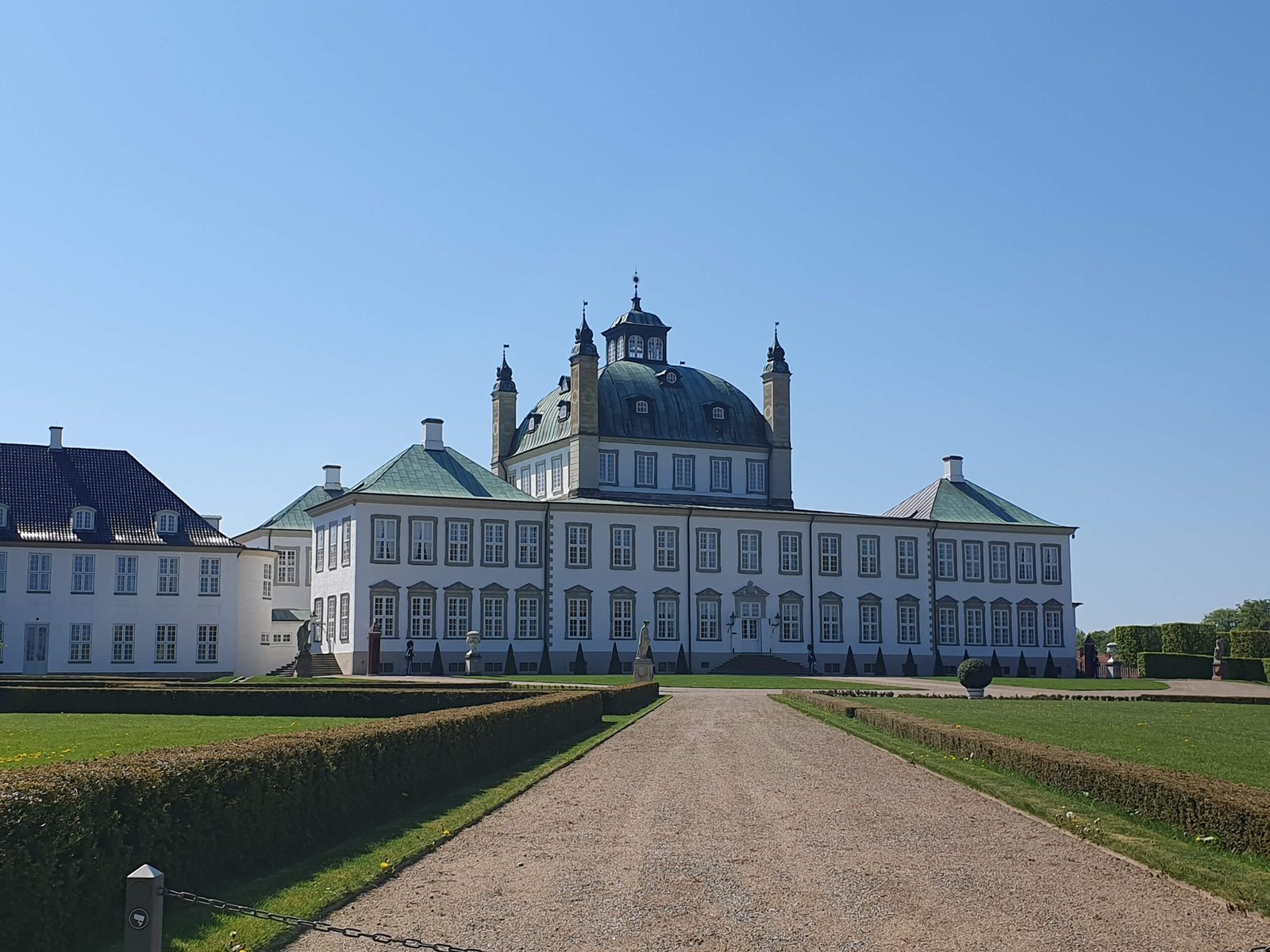
- Trail: Loop
- Starting point: Tisvilde
- Ending point: Tisvilde
- Length: 20.5 km
- Duration: 5 hours
- Difficulty: Easy
The list of best hiking trails near Copenhagen continues with the exploration of one of the most beautiful beaches in Tisvilde and more.
Asserbo Charterhouse, located in norther Sjælland, is a relic of a fortress and Carthusian monastery. Founded by Bishop Absalon in the late 12th century, the monastery initially operated as a Carthusian monastery before transitioning to be under the jurisdiction of Sorø Abbey and later of Esrum Abbey. Throughout the Middle Ages, the monastery evolved to a farmhouse or small manor, managed by the monks of Sorø Abbey. Initially it represented a main building, tower, cellars, and half-timbered houses, but then the site was fortified with monk bricks and was made accessible only via a drawbridge from the north side.
By mid 13th century, it had developed into a small village known as Asserbo. In the 15th century, Asserbo Charterhouse was leased to various noble families. Ownership thereafter fluctuated between The Crown and different noble families until the early 18th century when it succumbed to the sands coming from the north. The drifting sands were halted in the 1730s with the plantation of Tisvilde Hegn, and later in the mid-19th century it was excavated and restored by the 20th century.
If you are to explore the area, you will probably arrive at Tisvilde. The place is famous for the beautiful kilometer-long sandy beach. The town’s iconic brightly coloured bathhouses and bustling main street are hubs of activity, where locals and visitors can enjoy cozy eateries over glasses of wine. The town is also famous for the Musik i Lejet music festival.
Interestingly, Niels Bohr, a Danish Nobel prize physicist who contributed to understanding atomic structure and quantum theory, and his wife Margrethe bought a summer house Lynghuset in Tisvilde in 1924, where many distinguished natural scientists visited over the years. In 1957, Lynghuset underwent modernization, including the construction of an annex named Soldækket. This annex, overlooked by many, was designed by Vilhelm Wohlert, the same architect involved in creating the Louisiana Art Museum. It’s a lesser-known fact that Niels Bohr resided in Tisvilde for most of his time, adding yet another reason for you to visit the town and learn more about this town and explore the nature around it.
The hiking trail
In the crisp morning air of late April, with the promise of spring on the horizon, we embarked on a hike to Tisvilde, eager to explore its renowned beach and forest landscapes and historic sights. Our hike commenced from the charming streets of Tisvilde. Not long after traversing the streets of Tisvilde and passing closely by the beach, we set foot in Tisvilde Hegn- the forest trees still decorated in the muted hues of early spring with small spring tree buds. As we meandered through the woodland paths, the scent of moss and pine filled the air, reminding us very much of the forests of Skåne in Sweden.
Already in the beginning of the hiking trail we embraced the hilly terrain of the forest. We climbed and walked down many hills, sometimes some were made of crafted wooden stairs, while others were just plain forest pathway. There were mostly oak trees on the first few hills, their branches reaching out over our heads and filtering the few sun rays. Yet, as we ventured deeper, the landscape shifted, the oak trees gave way to moss-covered hills with evergreen pines on both sides.
Our path led us to unexpected, beautiful spot, where there was a secluded bench beneath a sprawling tree, offering panoramic views of the North Sea. There were even engraved initials and hearts on the nearby trees, making this place also a very important romantic pitstop.
But our adventure was far from over. Venturing further away now from the coastline and deeper into the heart of Tisvilde Hegn. Further on our trail, we stumbled upon the ruins of Asserbo Charterhouse, which was surrounded by tranquil waters and connected by a rustic wooden bridge. Here, we stopped for a while as it was so beautiful space right in the middle of a meadow, so we could also take in some sunlight after traversing the dense forested pathways. After taking a moment to rest, we embarked on the next leg of our hike, unaware of the challenges that we would unconsciously take.
Our decision to explore the northern coastline led us on a daring detour through a labyrinth of twisted branches and densely packed trees. As we navigated an invisible forest path, we had to be very agile and flexible at every step. Amidst the tangled foliage, we found a spot to rest for a bit before taking the last section of this very dense forest. The soft carpet of moss beneath our feet was something we did not expect but provided comfort amidst the uncertainty of where we were headed exactly at this point. Despite moments of doubt, our perseverance was rewarded as we finally reach the beach, greeted by the majestic sight of sand dunes covered with tufts of grass. In that fleeting moment, we found tranquility, and were happy that we embraced this challenging section just to explore more of the unknown.
Walking along the windswept beach, we felt the full force of nature’s power as strong gusts whipped sand around us, offering no refuge. Despite the slightly challenging conditions, we pressed on, through couple of more sand dunes and capturing the breathtaking beauty of the coastline through our lenses. On our path back towards the forest we found also few Korean Pasque flowers, with their purple blooms adding a splash of color to the rugged sandy landscape However, the relentless winds urged us to leave the coastline and find solace in the forest.
As the winds picked up, we managed to find a winding path back to the forest. At last, we discovered also a tranquil bench nestled amidst the trees, a welcome respite after our adventurous trek. With a hearty bowl of salad and sandwich in hand, we savoured the moment, nourishing both body and soul. Energized and refreshed, we continued along the forest road, each step bringing us closer to the train station in Tisvilde. As we bid farewell to the wilderness, we were with full hearts ready to go home.
Start
Tisvilde Station
End
Tisvilde Station
Duration
5 hours
Length
20.5 km
Difficulty
Easy
Fredensborg Castle in Nødebo: Royal Respite in the Forest

- Trail: Point to Point
- Starting point: Fredensborg
- Ending point: Gribskov Station
- Length: 21.5 km
- Duration: 5.5 hours
- Difficulty: Easy
Last but not least in our recommendations of best hiking trails near Copenhagen come the stunning Fredensborgcastle, lake Esrum and the forest of Gribskov!
Fredensborg Palace, situated on the eastern shore of Lake Esrum in Fredensborg, serves as the Danish royal family’s primary spring and autumn residence. It was constructed between 1720 and has a French-inspired baroque style. The palace was built like a small square house with a dome in the middle, and it was located at the centre of paths shaped like a star where one could hunt.
Adjacent to the main building is the Red Wing, characterized by the red tile roof. Further east is Margrave House and the orangery, which has huge glasshouse windows and a secret passage connecting it to the main building and a chappel. Near is also the Courtiers Wing, which the residence place for the court’s clerks and members of the royal household.
The palace, initially named Fredens Borg (“Peace’s Castle”), commemorated the signing of a peace treaty between Denmark-Norway and Sweden in July 1720, which marked the end of Denmark’s eleven-year involvement in the Great Northern War and determined the fate of Skåne, now part of Sweden, while the construction of the palace was still ongoing.
Notably, the palace gardens are Denmark’s largest historical gardens. A special part of the garden is called the “Valley of the Norsemen,” which has around 70 statues of Norwegian and Faroese farmers and fishermen.
The Fredensborg Palace serves as an active residence for the current Royal Family. The palace holds significant royal events, including the marriage of Princess Mary of Tasmania and Crown Prince Frederik in 2004 (now king and queen of Denmark), and Queen Margrethe’s golden wedding anniversary with Prince Henrik celebrated in June 2017, before Prince Henrik’s passing in February 2018, surrounded by his family at Fredensborg Palace.
Near Fredensborg Palace is lake Esrum, Denmark’s largest lake by water volume and the second-largest by surface area. On the lake’s western shore is located Gribskov, one of Denmark’s largest forests, and the quaint town of Nødebo, while Fredensborg Palace is on its southeast shore. Boat trips are available from Sørup, a village located just south of the palace gardens. During the 19th century, Lake Esrum facilitated the transportation of firewood from Gribskov to Copenhagen through a 9 km-long canal. The canal played a crucial role in the region’s commerce until 1874 when it transitioned to leisure trips. As you walk along the shore near Fredensborg, you will find eateries like Skipperhuset, which during the summer season prepares food from a fresh delivery of vegetables from the Fredensborg Palace vegetable garden, along with many other local ingredients from nearby farms.
Gribskov is Denmark’s largest ancient forest, comprising diverse natural landscapes and cultural heritage sites. Gribskov is home to Denmark’s largest wild population of fallow deer, ospreys, sea eagles, and ancient trees. Throughout its history, Gribskov has witnessed the evolution of human settlements, from the Stone Age to the present. In this majestic forest there are traces of ancient villages, burial mounds, and monuments like Mother Vulture’s Den and Bjergmandens Bakke. Gribskov offers a diverse range of natural and historical attractions, from beautiful lakes and lush meadows to ancient caves and cultural landmarks.
The hiking trail
On a beautiful mid-May weekend, we took a train to Fredensborg from Hillerød and went on a long exploration around the Palace of Fredensborg and the shores of Esrum lake. Though there are various transportation options available to get there, we chose a short train ride. Stepping off the train, we found ourselves soon after near Fredensborg Castle. We strolled through the enchanting gardens, including the remarkable Nordmandsdalen, which was decorated with sculptures. Despite the unpredictable May weather in Denmark, we were fortunate to experience a sunny day, perfect for wandering the picturesque pathways and admiring the castle’s grandeur.
Leaving the Fredensborg castle and beautiful gardens behind, we followed the trail along the tranquil shores of Esrum Lake, where sailboats could be seen from the shoreline. There was a bridge extruding into the lake waters which was providing an ideal setting for a leisurely lunch break, complete with benches and tables overlooking the glistening lake. We also passed by Skipperhus, a historic cluster of houses turned to boatyards, kayak, and other water activities clubs. There is also a famous restaurant, which uses the freshness of local produce from Fredensborg orangery to make their food. As we ventured onward, the landscape transitioned from lakeside serenity to forested pathways. We soon reached the charming village Sørup, bustling with boats and fishermen, offering tempting resting spots along the lake shore.
Our hiking continued through varying terrains, from asphalt roads to secluded forest pathways, where the tranquillity was interrupted only by the occasional chirping of birds. Along the forest trail we also saw a little fox with a long fluffy tail. Nearing Nødebo, we didn’t go into the heart of the village but instead turned west and soon after we found ourselves amidst lush park and near Esrum lake, perfect for a well-deserved picnic and basking in the warm sunlight.
As we looped back towards Gribskov, again circumventing Nødebo, we embraced yet again the peaceful ambiance of the forest, relishing the serenity of the beautiful nature surroundings. Eventually, weary but fulfilled, we concluded our 23-kilometer hike at Gribskov Station. As we waited for the train, we explored the lake just a few steps from the railways. The train ride itself was an amazing experience by itself as we passed through the beautiful forest of Gribskov before arriving to the busy city of Hillerød.
Start
Fredensborg Station
End
Gribskov Station
Duration
5.5 hours
Length
21.5 km
Difficulty
Easy
Embark on a journey through Danish history and natural beauty with these enchanting castle hikes. From the grandeur of Frederiksborg Castle to the mystical ruins of Asserbo Charterhouse, each destination offers a unique glimpse into Denmark’s rich cultural heritage. Lace up your hiking boots, explore the trails, and let the stories of the past guide your footsteps through the enchanting landscapes of Denmark.

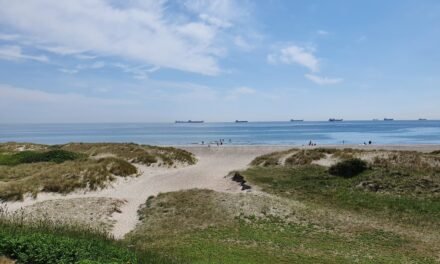



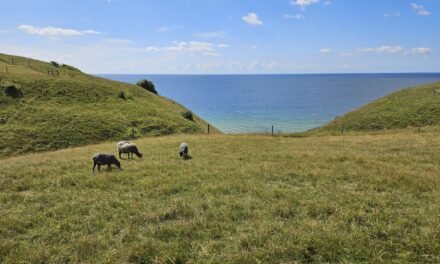
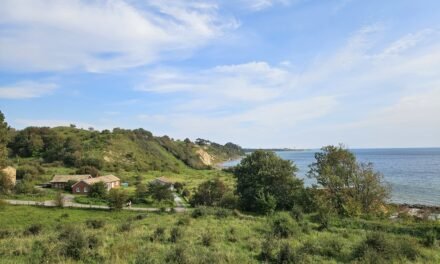
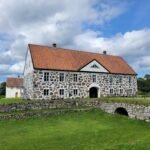


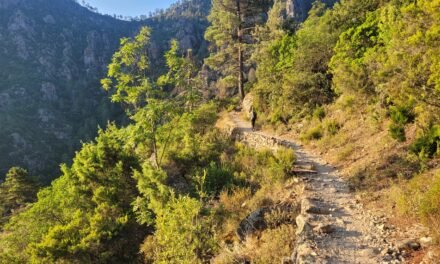
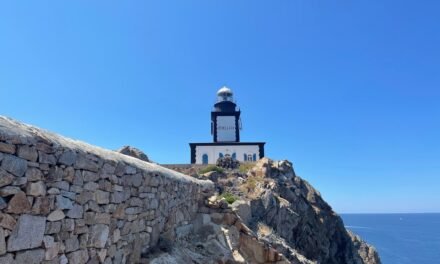


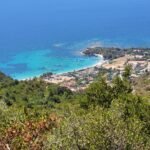
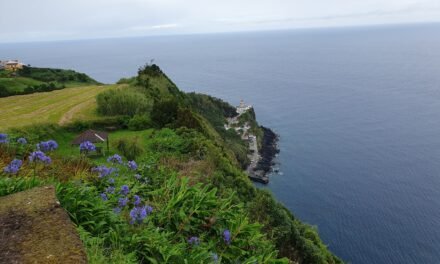


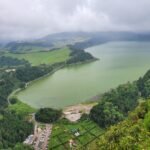
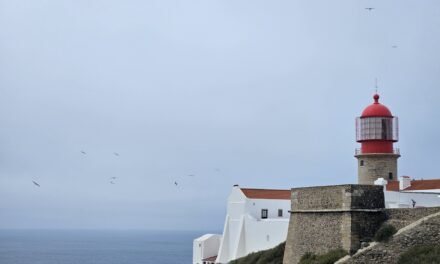
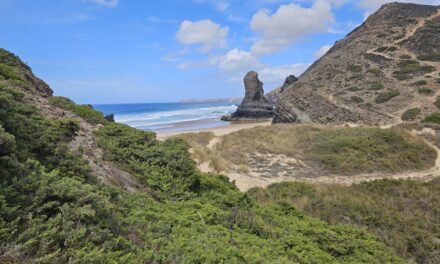












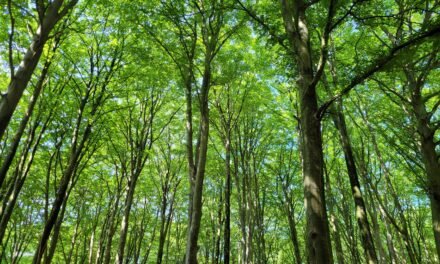


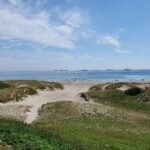

0 Comments